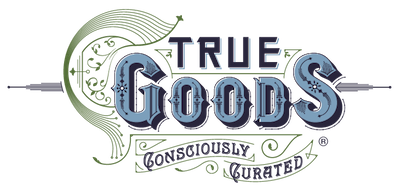
If you’re in the habit of reading your product labels, which in our opinion is a pretty good habit to get into, you may have noticed a mysterious ingredient called “fragrance.” It sure seems popular, though incredibly vague. What does it actually mean? Let’s break it down.
Definitions
- A pleasant smell or odor
- When appearing on an ingredient label, any and all ingredients included in a product for the primary purpose of creating a pleasant smell or masking an unintended unpleasant smell. Can range from one to literally dozens of unlisted, potentially toxic or allergenic, chemicals. Often found in perfume, lotion, cosmetics, cleaners, detergents, air fresheners, and much more.
When you see “fragrance” on your labels, there’s no way to know which chemicals are actually being used unless you have access to a lab and some serious chemistry expertise. A 2010 study by the Campaign for Safe Cosmetics (who incidentally has both the lab and the expertise) discovered that a selection of popular perfumes contained on average 14 undisclosed ingredients under the label “fragrance,” some of which are known to be irritants, and many others of which were completely untested for human toxicity. And that’s just within perfumes.
According to the International Fragrance Association, the official representative body of the global fragrance industry, there were 3,059 ingredients used to fragrance all kinds of products in 2011. Some, like carrot and onion oil, seem perfectly benign. Others, however, are associated with a whole slew of health and environmental concerns.
Hormone Disruption ~ A major problem with many perfumes. For instance, synthetic musks, the ingredients used to make perfumes smell so sexy and primal, can interfere with the proper functioning of the endocrine system in humans. Preservatives found in fragrances, such as parabens and phthalates, are also known to cause similar problems.
Environmental Pollution ~ The same musks that can disrupt human systems are also persistent pollutants, which can interfere with the immune systems of fish, mussels, and other aquatic life.
Sensitizers ~ Skin sensitization is the process by which the human body develops an allergic response to an irritating chemical. Chemicals known to trigger this process are known as sensitizing chemicals, or sensitizers. The more a susceptible individual is exposed to these chemicals, the more severe their reactions will be. Sensitizers often lead to...
Contact Allergy ~ A clinical review of fragrance ingredients showed that at least 100 of them are known to cause contact allergy, which can result in a painful and itchy rash on the skin of the wearer.
Toxic Fumes ~ Fragrance ingredients found in cleaners, such as pine and citrus oil, are known to react with ozone in the atmosphere to create formaldehyde fumes, which can be inhaled. The inhalation of other household cleaner fumes has been associated with the development of asthma, depression, earaches, and headaches in both women and any children they had during periods of high exposure to cleaners.
While not every ingredient used in fragrances is toxic, the lack of transparency in product labels makes it impossible to know what we’re getting. Luckily, there are many of us out there searching for clean, safe alternatives. Check out these articles for tips on safer cleaners and perfumes:
- Women’s Voices for the Earth - Alternatives to Toxic Air Freshener
- Examiner - How to find a healthy alternative to your favorite fine fragrance
Resources
- Campaign for Safe Cosmetics report, “Not So Sexy: The Health Risks of Secret Chemicals in Fragrance.” March 2010.
